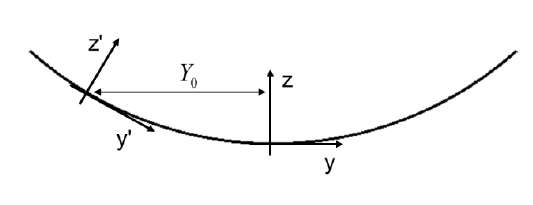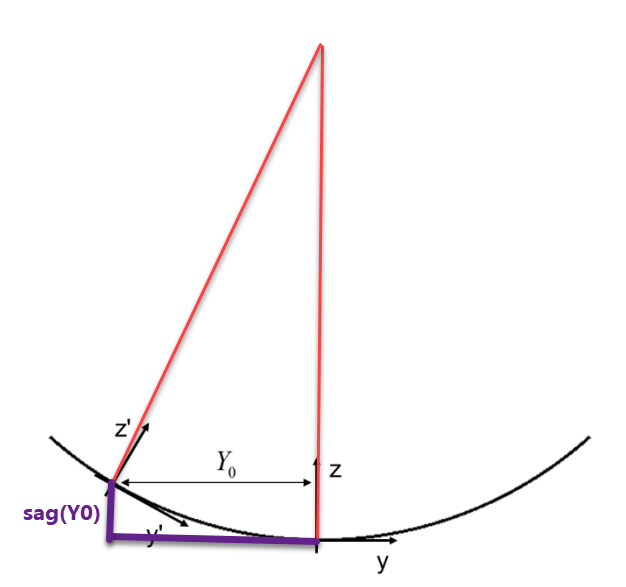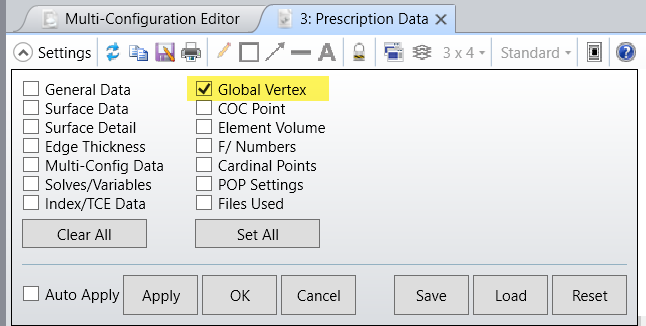Hi Everyone,
I try to implement off-axis prabolic mirror (Diameter 300 mm, focal length 1500 mm and off-axis angle ~10 deg [off-axis distance 262 mm]). In the classic way it is quite easy and well described
https://support.zemax.com/hc/en-us/articles/1500005486541-How-to-model-an-off-axis-parabolic-mirror
but when I try use new feature in OS realease 21.3 I can’t achive good results at first time.
Sandrine Auriol from Zemax team help me with my problem. So together we decide to create new topic. We think it will be helpful for other users.
If we have a look at this sketch from the help file, the Off-axis Conic Freeform is defined in the new (x’,z’) coordinates:

So we need to add the tilt -9.98 degrees. In the Off-Axis Conic Freeform, it is half this value.
We add this angle as a fold mirror.

This tilt is actually easy to calculate.
The angle is = atan(sag(Yo)/Yo)
Sag(Yo) = curvature * Y0^2 (no bottom term as it is a parabolic with a conic constant of -1)
So angle = atan(curvature * Y0^2/Yo) = atan(Yo/Radius)


What’s more. I noticed that distance from OPA to image plane is different in both solutions 1523,06 mm vs. 1511,44 mm.
| OLD | NEW |
| 1523,06 mm | 1511,44 mm. |
In the attachment you can find new and old OPA implementation.
What do you think?
Best regards,
Maciej










